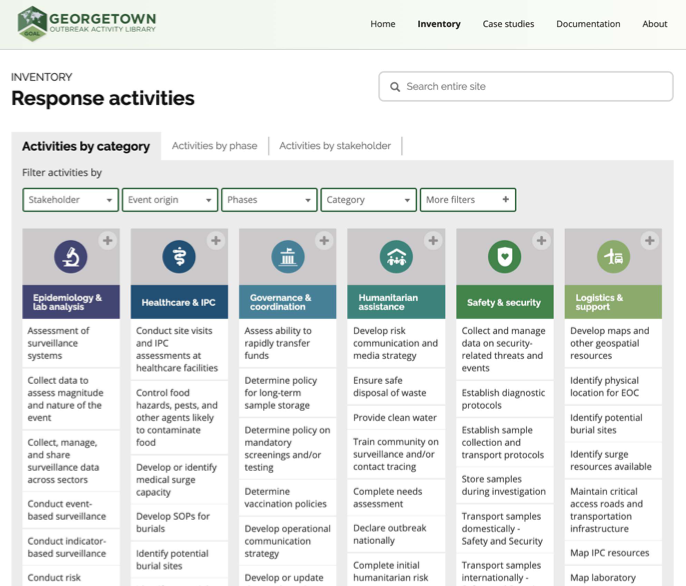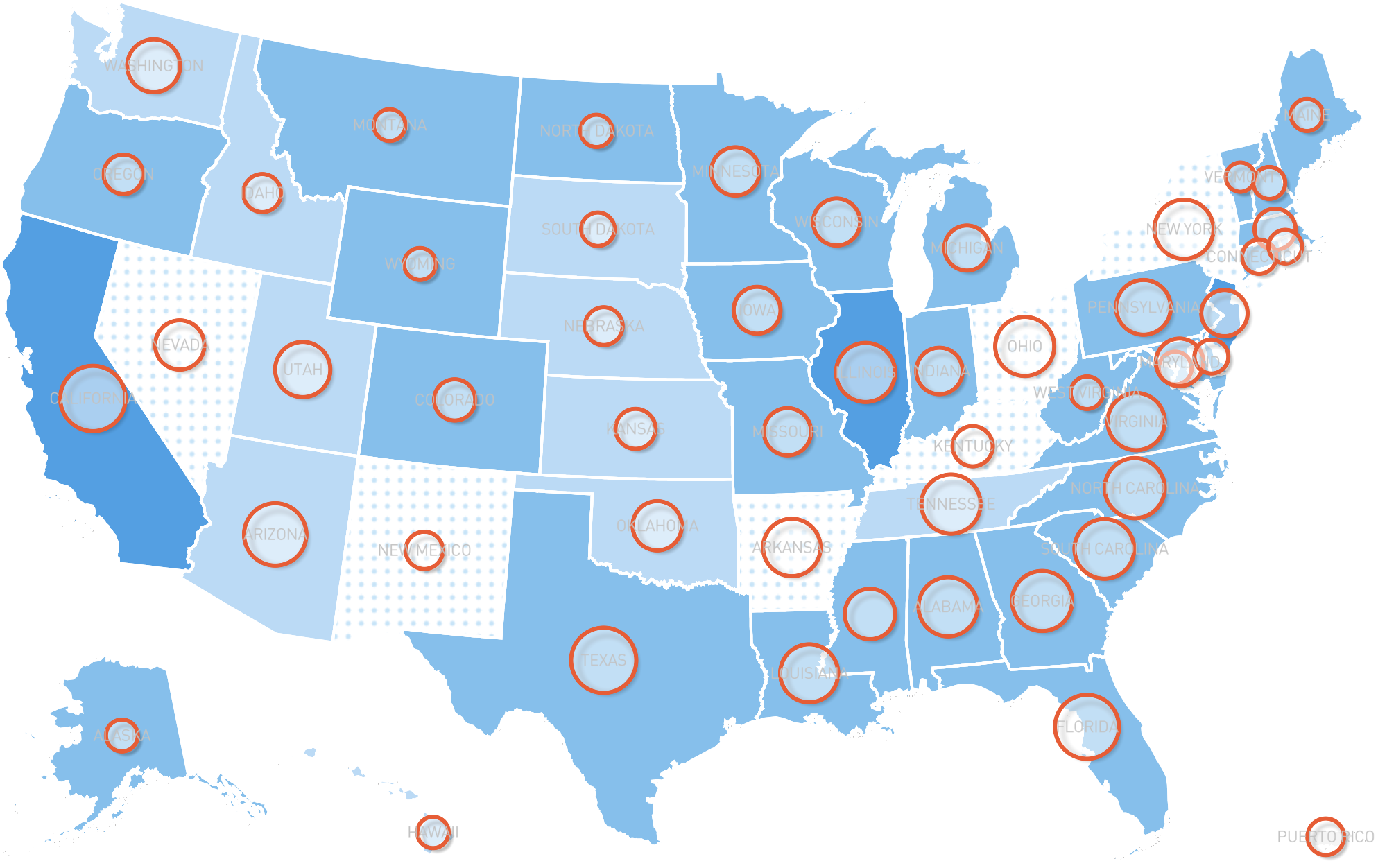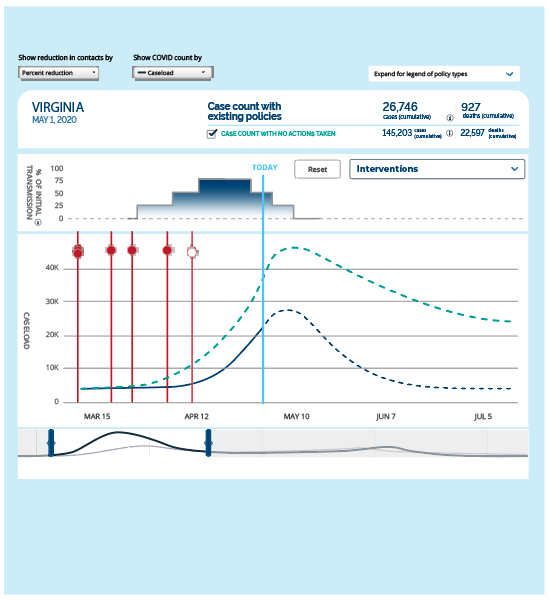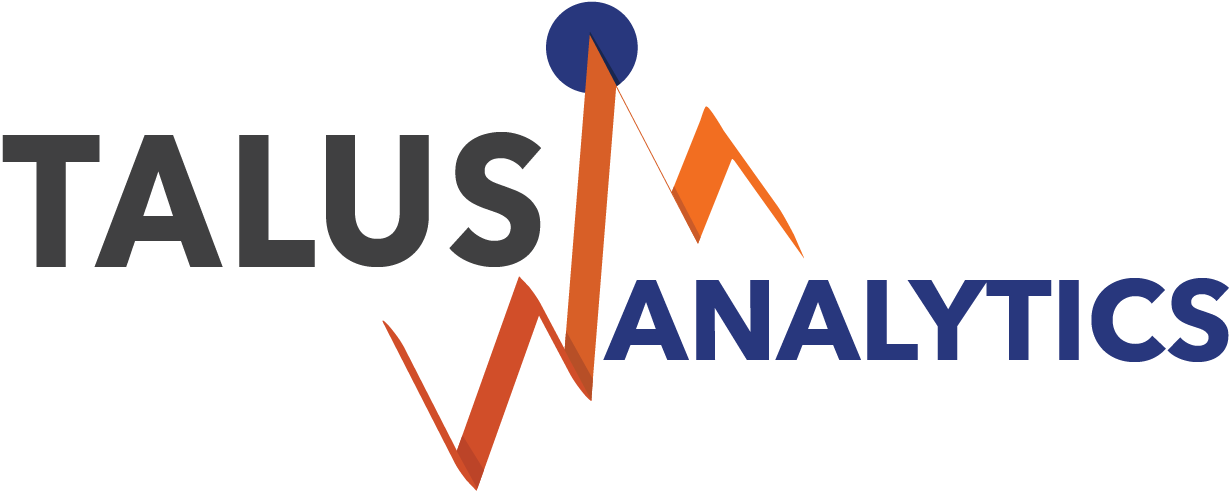Outbreak Activity Library: An online, interactive, user-friendly resource for effective outbreak response
Jul 31, 2020

Dr. Rebecca Katz and Dr. Ellie Graeden
The effective prevention, detection, response, and recovery from infectious disease outbreaks requires informed and coordinated action from a multitude of actors. Outbreaks are increasingly occurring in more complex environments, which, in turn, expands the number of stakeholders and types of activities required to control the spread of disease. This is particularly true when outbreaks cross international borders and impact multiple species.
There is no better example than the current COVID-19 pandemic. Oftentimes during the COVID-19 response, we have remarked that the public health community is “writing the textbook as we go.” The response has required applying a rapidly evolving understanding of the virus and the evidence-base to support public health decision making that has significant impacts on health, the economy, and everyday life.
Yet, we discovered several years ago that as outbreaks around the world have become more complicated, there was no comprehensive source of all of the activities and stakeholders required for successful outbreak response. This resulted in an incomplete understanding of what outbreak response really meant. This lack of a shared understanding of response requirements was on display – not only during the COVID-19 response – but also in many of the diplomatic discussions on infectious disease threats we participated in over the past decade.
To fill this gap, we have created the Georgetown Outbreak Activity Library (GOAL), an online platform that clearly identifies all of the activities and actors involved in preparedness, response, and recovery of infectious disease outbreaks. This user-friendly, interactive tool, provides a shared resource to communicate what needs to get done, when, and by whom, and links each activity to easily accessible policy and guidance documents.
Over 250 activities are included in GOAL and organized into categories (e.g., humanitarian assistance and community engagement; governance, coordination and policy; healthcare and infection prevention and control; safety and security; epidemiology and laboratory analysis; and logistics and infrastructure support) and the library allows users to filter and search by stakeholder or activity during a particular phase of an outbreak, by time, sector and stakeholder. The library also contains case studies that are linked to activities.
 *Figure 1: The GOAL response activities*
*Figure 1: The GOAL response activities*
The tool is designed for policy-makers to address legislative gaps, for responders to understand existing guidance and define response requirements for new and emerging events, and for developing plans and involved in preparedness efforts to ensure the work they are doing is comprehensive and based in the practical realities of outbreak response. Indeed, as COVID-19 has unfolded, there has been a significant lack of clarity about what needed to be done when, and by whom. GOAL is an essential new tool to help guide response efforts and help ensure that we are better and more comprehensively prepared for the subsequent phases of this outbreak and the next.
This blog post is based on CGHSS Research Brief 2020-05, available at: (https://ghss.georgetown.edu/covid19/).







